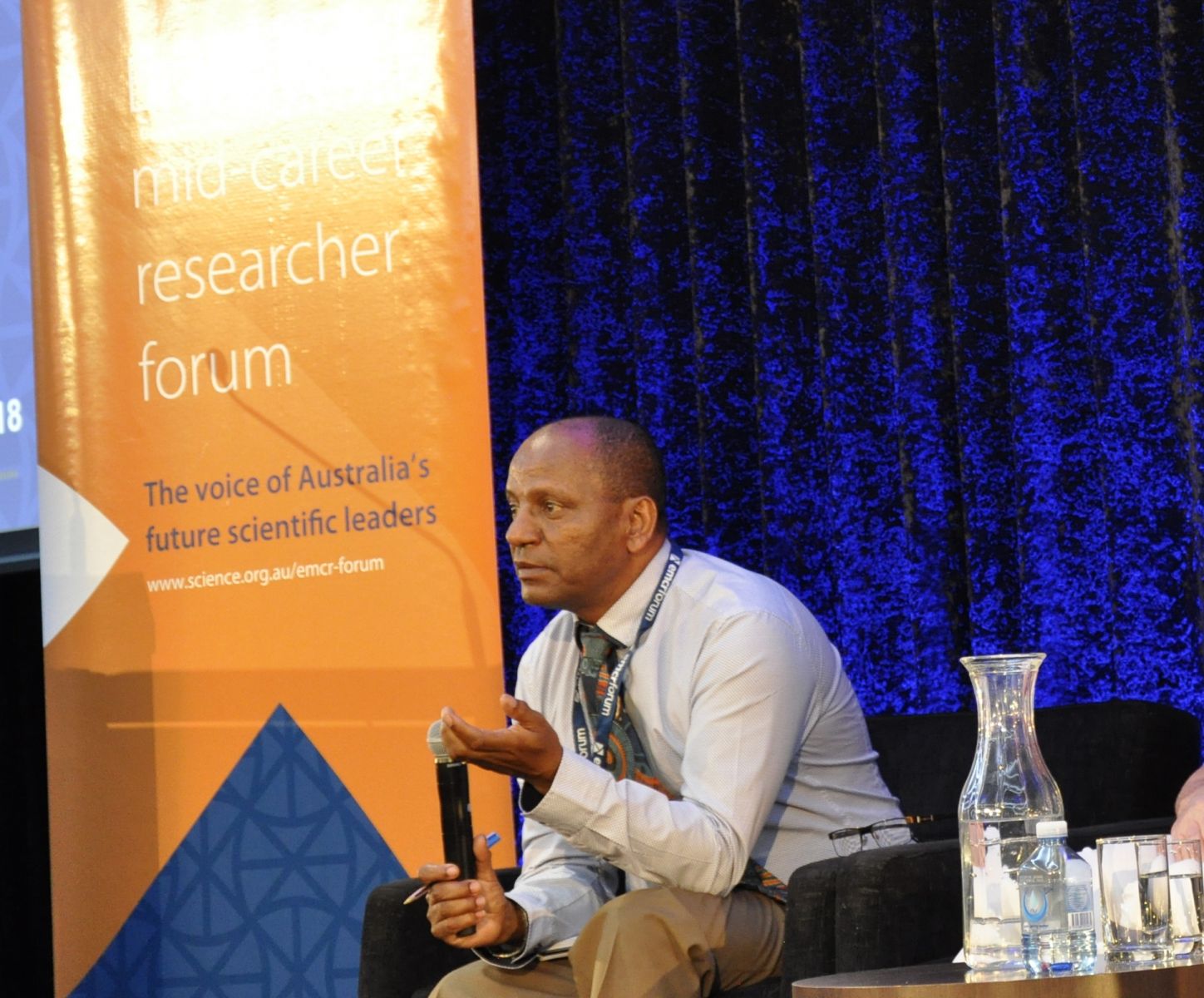

Soressa Kitessa
Senior Research Scientist South Australian Research and Development Institute (SARDI)
The prediction is that jobs of the future will largely depend on competence in STEM. Australia needs to be on the front foot in harnessing the capabilities of all its citizens.
Growing up in rural Ethiopia, access to textbooks differentiated the rich and poor kids. In the digital age of this century, access to knowledge and education is costlier, and there are more things which kids of low socioeconomic status can miss out on.
The issue of underrepresentation of minorities in STEM is complex. When I started working in Australia, I was the only African on the site. I wasn’t just the new kid on the block, I was the new kid on the block who looked like no one else. To the credit of my employer and colleagues, my career did not suffer. I had a very good support from my manager, and mentoring sessions with a retired lipid biochemist. Even today, I am the only African staff member on our site.
I am unaware of publications or initiatives in Australia that target participation of underrepresented minorities in STEM. This might be because I don’t work in the education sector. When I did some search as a background for this article, I came across many publications and initiatives in the USA on this topic from which Australia may benefit.
In the USA, university enrolments by students of minority backgrounds has increased over the decades, but the gap in participation in STEM courses and jobs has persisted. The National Action Council for Minorities in Engineering poignantly states that the engineering workforce does not look like America as a whole. The two key reasons suggested for this phenomenon are minorities being less likely to pick a STEM major and if they do, they are less likely to persist. Minorities are less likely than non-minorities to initially declare a science major (33.4% versus 40%) however, the more striking difference is in persistence and graduation with a science degree (24.6% versus 43.9%).
The problem of persistence is not fully understood. It has been suggested that institutional characteristics rather than faculty role models play a key role for persistence in STEM for women and minorities. Interestingly, institutions with more focus on graduate than postgraduate teaching appear more successful in retaining their undergraduate majors. Selective colleges with more expenditure on research relative to total educational expenditure were shown to have particularly lower persistence rates for minorities. Understanding the underlying factors that lead to less persistence is critical in this effort.
The USA has made a sustained investment to increase the participation of minorities in the sciences, with considerable investment from the National Science Foundation and the National Institutes of Health. This has borne some fruits. For instance, the number of underrepresented minorities in the field of engineering between 1977 and 2011 was as follows: 3-fold increase in bachelor’s, 4-fold increase in master’s and 7-fold increase in doctorate degrees in the area of engineering. The Level Playing Field Institute (www.lpfi.org) targets kindergarten to high school students (K -12). They run a Summer Math and Science Honours Academy (SMASH), a summer STEM enrichment program providing coursework, mentors, role models and support networks for students of colour. This is an innovative idea worth importing into Australia. They also run computer science initiatives involving hackathons, workshops and programming targeting underrepresented minorities.
A study of students in science majors across the various University of California campuses reported that minority students who persisted in the sciences had entering credentials that were 0.682 standard deviation higher than those who switched to a major outside of the sciences. The differences in persistence between minorities and non-minorities, and perhaps within minorities, may in part be a reflection of academic preparation. An interesting analysis of that study showed that majoring in the sciences in less selective campuses results in higher wages than majoring in non-sciences in more selective campuses. A good recruitment slogan for Australian universities outside the Group of 8. A second observation from that study with respect to wage return is that the benefit of majoring in the sciences rather than non-sciences increases as the college quality increases.
Finally, my perception is that the proportion of people of African descent in STEM is far less than the proportion of Africans in the wider Australian population. The starting point should be to generate the data and get a handle on the size of the problem. This will provide the benchmark from which trends can be determined and impact of interventions can be assessed in the future. If the gap is as bad as I fear it is, there needs to be an investment to understand the nature of the problem: failure to select STEM courses versus failure to persist in STEM courses. I have read contrasting positions regarding the USA Affirmative Action. I did not have the time to fully exhaust the topic and reach a conclusion. It is a hotly debated issue (with a tinge of political undertone). In any case, its relevance to STEM enrolment in Australia may be minimal.
© 2025 Australian Academy of Science